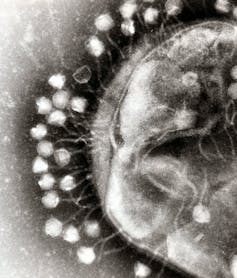Safe Work Australia (SWA) has released a consultation regulatory impact statement (RIS) aimed at obtaining feedback on possible WHS amendments to deal with risks surrounding workplace respirable crystalline silica.
Under SWA’s best-case option – one of five listed in the RIS – persons conducting a business or undertaking (PCBUs) across multiple industries would be required to proactively identify and assess the risks of all processes involving materials containing crystalline silica.
The rules would add to existing WHS regulations by, among other things, requiring a PCBU to develop a “silica risk control plan”, where necessary, that: identifies the high-risk crystalline silica processes to be undertaken; outlines the hazards and risks associated with the work; outlines measures to control the risks; and explains how the measures will be implemented.
This option would also require PCBUs to provide the results of silica-related health and workplace air monitoring processes to a WHS regulator within 30 days of receiving the reports.
The AWU has long called for national regulations setting out minimum safety standards to protect workers in every affected industry, with tough penalties for employers who fail to comply.
AWU ³Ô¹ÏÍøÕ¾ Secretary Daniel Walton said the RIS consultation process was a step in the right direction, provided it was listened to, and acted on.
“The RIS suggests a number of options ranging from doing virtually nothing to options involving significant national regulatory change,” Mr Walton said.
“About 600,000 Australian workers are currently exposed to silica dust in industries across the nation including tunnelling, quarrying, cement work, mining, construction, and all of them deserve to be protected from this potentially lethal hazard.
“We will be asking Safe Work Australia to think hard on implementing the toughest regulatory option, as that is the only way to protect all workers in all at-risk industries from silica dust.”
The other options outlined in the RIS include:
- Base case: A “do-nothing” option that relies on existing laws, plus a few national regulatory initiatives now underway. SWA notes this is unlikely to work, as extensive compliance and enforcement activities in recent years have not stopped workers from being exposed to hazardous silica dust.
- Awareness and behaviour initiatives: Targeting workers, PCBUs and other duty holders in the construction, manufacturing, demolition tunnelling, quarrying, and mining industries. SWA says these are also unlikely to do much unless combined with one of the regulatory options.
- Clarification of existing requirements in new WHS Regulations on how they apply to defined “high risk silica processes”: SWA says this would ensure regulations related to high-risk silica processes are clarified, but would have limited effect on its own.
- ³Ô¹ÏÍøÕ¾ licensing framework: Legislation that would only cover working with engineered stone.
SWA notes some of the additional duties in its best-case, reform option are based on the Victorian Occupational Health and Safety Amendment (Crystalline Silica) Regulations 2021, made in November last year.
The AWU’s Victorian Branch was heavily involved in developing and their Compliance Code, which now provides much greater protection to all Victorian employees working with respirable crystalline silica.
Among its changes Victoria will now:
- Add additional regulatory oversight of high-risk crystalline silica work outside of engineered stone across all industries, including the construction and earth resources industries.
- Identify and control high-risk crystalline silica work (outside of engineered stone) and the intent of risk assessments;
- Require clear standards for PCBUs in order for work to start, and to stop if risk assessments and hazard statements are not followed.
- Provide information to job applicants and employees on risks associated with exposure to crystalline silica dust, as well as the measures required to control those risks.
Mr Walton said the dangers of silica exposure are now being addressed by Victoria’s gold-standard regulations, which could be mirrored at a national level by SWA.
But he said he was disappointed that the NSW Parliamentary Standing Committee’s Review of the Dust Diseases Scheme report released a few weeks ago showed the .
Mr Walton said the report contained some positive recommendations, but no indication of a clear intention to legislate to put any of them into practice.
“It is time NSW stopped pussyfooting around, followed the Victorian lead and legislated for real change when it comes to protecting workers from silica dust.”
The AWU will be making a submission to Safe Work Australia on its RIS consultation, which is open until August 15.







